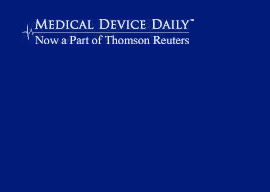Continuum recently attended the American Association of Clinical Chemistry Expo—the largest U.S. tradeshow in the field of clinical diagnostics. We witnessed advances, as expected, in the field through the introduction of more immediate and effective tests and instrumentation. We also noted product design trends in the medical device space—as consumers raise their expectations around usability of technology, device manufacturers aim to keep up by designing products that appeal to users by feeling modern and capable.
Smartphones as Diagnostic Instruments
We’ve been thinking a bit about the role of smartphones as digital health becomes more prevalent. As we saw at AACC, this trend is continuing to gain traction. Alfa Scientific’s Smart Mobile Reader and Holomic's Rapid Test Reader both use a smartphone’s camera to capture images of a variety of colorimetric and rapid diagnostic test strips. The idea is attractive: ultra-portable and inexpensive technology eliminates human error interpreting test strips and enables a cloud-based record of results. The convenience of smartphone readers may be huge, say, for women wanting to track and predict fertility to maximize (or minimize) probability of conception, but would you want to be screened for cancer using optics designed for snapping selfies?
Consumer Electronics Influence Clinical Diagnostics
We have become so familiar with tablets and smartphones that we’ve come to expect a new standard of “product behavior” from instruments, both in the lab and at the point of care. Clunky beige boxes, tiny LCD screens, and fiddly buttons are a relic of the past, and when clinical samples aren’t being read by users on their smartphones, we’re seeing more and more instruments designed with the consumer-electronics-savvy user in mind. Information displays are clear and uncluttered, menu structures are easily navigated via touchscreen and product housings are simple and clean. Great examples are Cepheid’s GeneXpert Omni, Samsung's LabGeo analyzers, Thermo Fisher's QuantStudio instruments and Siemen's Xprecia Stride Coagulation Analyzer.
Multiplexed Molecular Diagnostics—No More “Guess and Test”
Faced with patients ailing from critical infections such as sepsis, doctors have traditionally prescribed powerful broad-spectrum antibiotics until the offending microbe can be cultured and identified, a process that can take days. Standard molecular tests (PCR) detect the presence of a specific sequence of nucleic acid and therefore detect only one specific pathogen, making it difficult to identify bacteria with one quick test. Nanosphere and Biofire Diagnostics both presented easy-to-use systems that simultaneously test for the presence of dozens of targets in a single sample, dramatically reducing time required to identify critical infections.
Molecular Diagnostics at the Point of Care
Ever taken a sick child to the doctor, seen the rapid strep test come back negative, and experienced the doctor prescribing antibiotics anyway because “the test gives a lot of false negatives?” Throat culture results, available a couple of days later, only serve to confirm whether the doctor diagnosed correctly, and in the meantime, we may have created antibiotic resistant superbugs. Alere's i Strep A system system and Roche's Liat system aim to change this by detecting DNA specific to Streptococcus bacteria in minutes. Both are CLIA waived—meaning they can be used in the doctor’s office or your local Minute Clinic. Meanwhile, Cepheid presented the slick GeneXpert Omni, which promises to allow their range of molecular diagnostic cartridges to be run anywhere from rural developing world locations to emergency rooms.
The Hottest Company Wasn’t Even There
Theranos dominated conversations during breakout sessions without attending the conference. They’re seeking to disrupt the industry by providing diagnostic lab services at dramatically reduced—and transparent—prices. Via tiny blood samples collected by partnering pharmacies and provider organizations, their services are becoming increasingly accessible. We don’t know how they’re doing it and, understandably, they don’t want us to.
In summary, the traditional model of samples being analyzed in central labs by skilled professionals using specialized instrumentation is not going away anytime soon; however it is being increasingly complemented by testing at the point-of-care as well as in the home. Given such a wide variety of use scenarios, it’s critical to define the right product attributes as early as possible in development programs. At Continuum, we conceive and test ideal user experiences in the earliest phases of development programs in conjunction with technology evaluation and business strategy. With a focus on the characteristics that resonate best with users paired with designing for the right clinical outcomes, we’re looking forward to a bright future for diagnostics.



